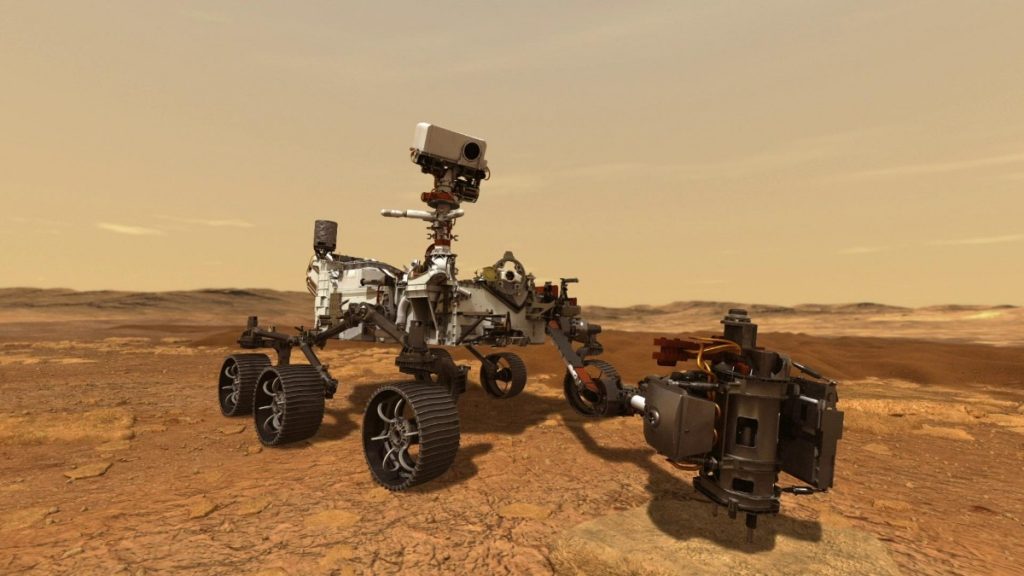The speed of sound on Mars has been confirmed by scientists using equipment on the Perseverance rover to study the red planet’s atmosphere, which is very different from Earth’s. What they discovered could have strange consequences for future Martian communication.
The findings suggest that speaking in Mars’ atmosphere may produce an odd effect because higher-pitched sound appears to travel faster than bass notes. We wouldn’t try because Mars’ atmosphere is unbreathable, but it’s fun to think about!
The speed of sound on the planet Mars
is different than it is here on Earth, according to studies conducted by scientists, which were revealed during the 53rd Lunar and Planetary Science Conference.
The speed of sound on Earth is not constant too. It varies depending on factors such as density and temperature. In our atmosphere at 20°C, it travels fast – about 343 m/s, and in the water 1480 m/s. However, in steel, it is already 5100 m/s.
Mars’ atmosphere is a lot more tenuous than Earth’s, around 0.020 kg/m3, compared to about 1.2 kg/m3 for Earth. That alone means that sound would propagate differently on the Red Planet.
However, the layer of the atmosphere just above the surface, known as the Planetary Boundary Layer, complicates things: during the day, the warming of the surface generates convective updrafts, which cause strong turbulence.
Traditional instruments for measuring surface thermal gradients are highly accurate, but they can suffer from a variety of interference effects. Fortunately, Perseverance has something special: microphones that can hear the sounds of Mars and a laser that can make a perfectly timed noise.

The SuperCam microphone
was included to record acoustic pressure fluctuations generated by the rover’s laser-induced breakdown spectroscopy instrument as it ablates rock and soil samples on Mars’ surface.
As it turns out, this came with an excellent benefit. To determine the speed of sound at the surface, the scientists measured the time between the laser firing and the sound reaching the SuperCam microphone at 2.1 meters altitude.
The findings support predictions based on what we know about the Martian atmosphere, confirming that sounds travel at 240 meters per second near the surface.
The unusual feature of Mars’ shifting soundscape, on the other hand, is completely out of the blue, with conditions on Mars causing a quirk not seen anywhere else.
“Due to the unique properties of the carbon dioxide molecules at low pressure, Mars is the only terrestrial-planet atmosphere in the Solar System experiencing a change in speed of sound right in the middle of the audible bandwidth (20 Hertz to 20,000 Hertz),” the researchers write.
The collision-activated vibrational modes of carbon dioxide molecules
do not have enough time to relax or return to their original state at frequencies above 240 Hertz. As a result, sound travels more than 10 meters per second faster at higher frequencies than at lower frequencies.
This could result in what the researchers call a “unique listening experience” on Mars, with higher-pitched sounds reaching the listener faster than lower-pitched ones.
Given that any human astronauts traveling to Mars in the near future will need to wear pressurized spacesuits with communications equipment, or live in pressurized habitat modules, this is unlikely to pose an immediate problem – but it could be a fun concept for science-fiction writers to experiment with.
READ MORE: Hear How You Would Sound on Mars!





